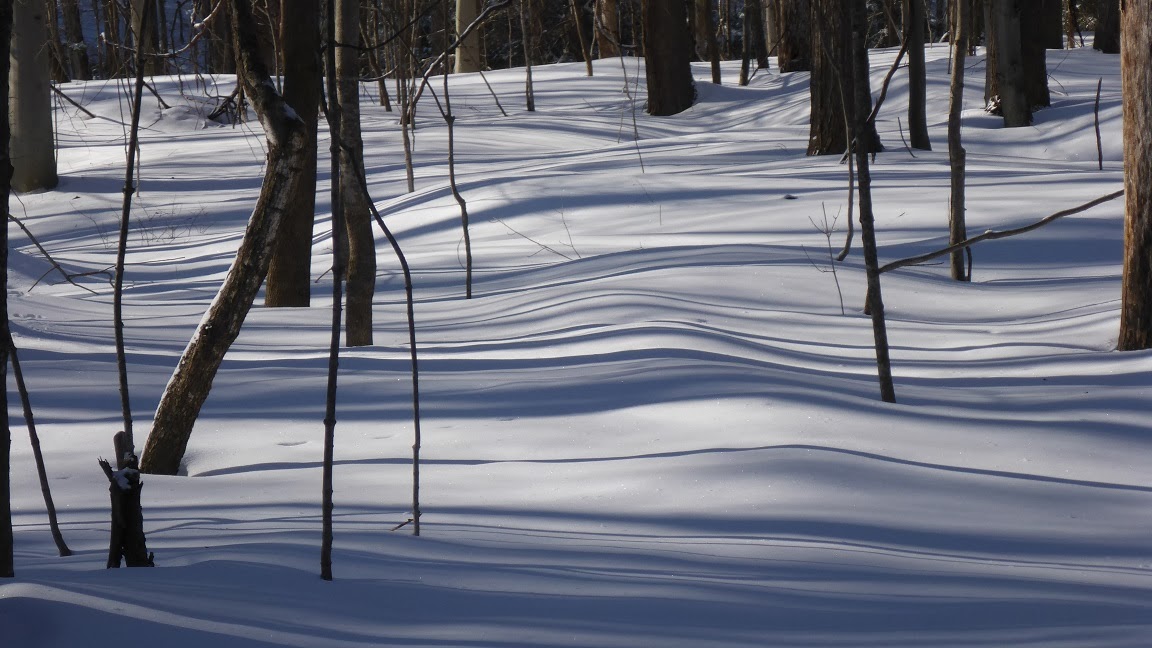 |
| With out looking up, these"bar codes" can actually tell a lot about a forest |
 |
| A good diversity of shadow thicknesses indicate a wide range of tree ages |
 |
| In the younger forest the tree shadows lay straight and show few undulations |
 |
| Now this reminded me of the atmospheric bands of Jupiter |
 |
| - or perhaps the grooves in a phonograph record |
 |
| In the meadow next to the forest, the tree shadows were most dense - only narrow, cloud-like wisps of light could reach the snow. In effect it made the ground look like the sky |
 |
| Note the thin and rather sketchy tree shadows in one of our reforestation fields - virtually all young trees here |
 |
| Undulating, wave-like tree shadows show the "pit and mound" topography of a forest floor never leveled by machines |
 |
| In this case significant drifting exaggerates the natural contours of the forest floor |
 |
| These tracks tell of a recently emerged Eastern Chipmunk that managed to dig up something to nibble on |
 |
| White-tailed Deer have developed a vast network of trails that run throughout the nature preserve |
 |
| A great number of fresh animal tracks converge on the frozen stream at the bottom of this gorge |
 |
| Tracks of several small rodents radiate from the base of this Sugar Maple tree |
 |
| Footprints of a lone coyote that recently passed through this small woodland clearing |



No comments:
Post a Comment